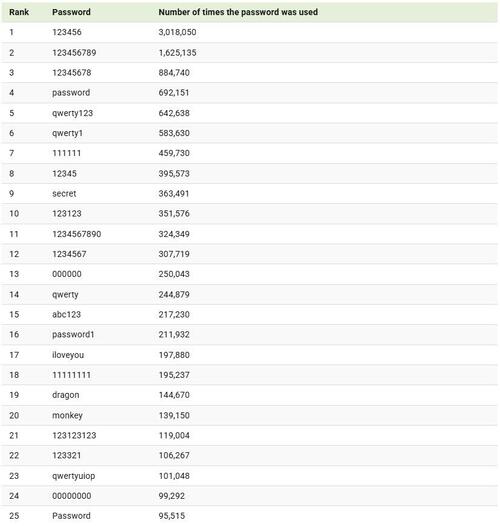Most people are guilty of using a weak password at some point. But just how predictable can they be?
This infographic, via Visual Capitalist’s Marcus Lu, reveals the top 25 most commonly used passwords globally, from ‘123456’ to ‘password’.
Data & Discussion
The data for this visualization comes from NordPass, which analyzed the most frequently used passwords based on a 2.5TB database of credentials exposed by data breaches.
Numbers Still Reign Supreme
The top password—“123456”—was used over 3 million times in the dataset analyzed by NordPass. In fact, six of the top 10 passwords are purely numeric, highlighting how common predictable number patterns remain.
These types of passwords are among the easiest for hackers to guess using brute-force attacks, taking a matter of seconds.
Keyboard Patterns and Simple Words
Along with numbers, users often rely on keyboard sequences like “qwerty” or common words like “password” and “secret.” While these may be easy to remember, they’re also easy to hack. Variations like “Password” or “password1” offer little improvement in security.
How to Create a Strong Password
According to NordPass, your password should be at least 20 characters long and include uppercase and lowercase letters, numbers, and special symbols (e.g. @#$%). Some browsers, such as Google Chrome, can also suggest a strong password for you.
Additionally, NordPass suggests that you never reuse passwords. If one account were to be compromised, other accounts that share the same password could also be at risk.
If you enjoyed today’s post, check out The Five Most Common Cybersecurity Mistakes on Voronoi, the new app from Visual Capitalist.
Tyler Durden
Tue, 07/08/2025 – 04:15
Click this link for the original source of this article.
Author: Tyler Durden
This content is courtesy of, and owned and copyrighted by, https://zerohedge.com and its author. This content is made available by use of the public RSS feed offered by the host site and is used for educational purposes only. If you are the author or represent the host site and would like this content removed now and in the future, please contact USSANews.com using the email address in the Contact page found in the website menu.








